LeEco Announces New Le 2, Le 2 Pro, and LeMax 2
by Andrei Frumusanu on April 20, 2016 7:45 AM EST- Posted in
- Smartphones
- Mobile
- LeEco
- LeMax
- Le

Today in Beijing we had the opportunity to attend LeEco's presentation event announcing their new flagship smartphone devices. LeEco has been a company we haven't had the chance to cover to date, yet the company is making a lot of noise and positioning itself against its competition in the smartphone space and beyond. Today's event was a 3 hour pandemonium where among other things we saw the launch of a new smart-TV as well as Le's first public demonstration of their electric car.
But getting to the topic at hand, LeEco has been making a concerted push into the smartphone space. And today they are updating their smartphone lineup with a trio of devices all appropriately suffixed as 2. These are the Le 2, the Le 2 Pro, and the LeMax 2.
| LeEco Le 2, Le 2 Pro & LeMax 2 | |||
| Le 2 | Le 2 Pro | Le Max 2 | |
| SoC | Helio X20 2x A72 @ 2.3GHz 4x A53 @ 2.0GHz 4x A53 @ 1.4GHz Mali T880MP4 @ 780MHz |
Helio X25 2x A72 @ 2.5GHz 4x A53 @ 2.0GHz 4x A53 @ 1.4GHz Mali T880MP4 @ 850MHz |
Snapdragon 820 2x Kryo @ 1.59GHz 2x Kryo @ 2.15GHz Adreno 530 @ 625MHz |
| RAM | 3GB LPDDR3-1866 | 4GB LPDDR3-1866 | 4/6GB LPDDR4-3733 |
| NAND | 32GB eMMC 5.1 NAND | 32/64GB UFS 2.0 | |
| Display | 5.5" 1080p LCD | 5.7” 1440p LCD | |
| Modem | 2G/3G/4G LTE Cat 6 (Integrated MediaTek SoC Modem) |
2G/3G/4G LTE Cat 12 (Integrated Snapdragon X12 Modem) |
|
| Dimensions | 151.1 (h) x 74.2 (w) x 7.5 (d) mm 153g |
156.8 (h) x 77.6 (w) x 7.99 (d) mm 185g |
|
| Camera | Rear Camera 16MP w/ PDAF |
Rear Camera 21MP IMX230 w/ PDAF |
Rear Camera 21MP IMX230 w/ PDAF & OIS |
| Front Facing Camera 8MP 1.4µm pixels |
|||
| Battery | 3000mAh | 3100mAh | |
| Launch OS | Android 6.0 w/ EUI 5.8 | ||
| Connectivity | 802.11a/b/g/n/ac 2.4 & 5GHz BT 4.2, GPS/GNSS USB-C no 3.5mm headphone jack |
||
| SIM Size | NanoSIM + NanoSIM | ||
| Launch MSRP | RMB ¥1099 (USD~170, ~150€) |
RMB ¥1499 (USD~230, ~205€) |
4GB + 32GB RMB ¥2099 (USD~325, ~285€) 6GB + 64GB RMB ¥2499 (USD~385, ~340€) |
Starting at the flagship level, we have the LeMax 2. Based around Qualcomm’s popular Snapdragon 820, the 5.7” phablet’s spec sheet reads very similar to some of the other flagship phones we’ve seen launched this year. LeEco is pairing the 820 with 32 or 64GB of UFS 2.0 NAND, and as a first for any Android smartphone, up to 6GB of LPDDR4 RAM. To have the first 6GB phone show up here is admittedly unexpected, but given the prevalence of 3GB/4GB configurations elsewhere, it was only a matter of time until someone used higher capacity chips to get to 6GB.
Shifting gears, the display for the phone is a 1440p LCD, which will put it in competition with the likes of the Samsung Galaxy Note5 and S7 series, and the LG G5. The display subjectively looked good with high brightness and good viewing angles. Otherwise for image capture purposes, LeEco has outfitted the phone with a 21MP OIS-capable rear camera, utilizing Sony’s IMX230 sensor. As has been the case for a number of phones this generation, there is a sizable camera hump here to house the camera while keeping the rest of the phone relatively thin. Meanwhile front facing camera duties are handled by a 8MP camera with 1.4µm pixel pitch on the sensor.
Rounding out the package, LeEco is equipping the phone with a 3100mAh battery, and while we’re still working to get the precise battery voltage, at typical voltages we’d be looking at around a total capacity of 11.9WHr. Of course you’ll also find a full suite of wireless connectivity options enabled through the Snapdragon 820, including Qualcomm’s integrated X12 LTE modem, and dual-band 802.11a/b/g/n/ac support.
But perhaps the most notable aspect of this phone will be the I/O connectivity. That LeEco is using the increasingly common USB Type-C port is, if anything, to be expected. However what’s unexpected is that this is the only port; a 3.5mm audio jack is not present. Instead the company is piping out audio over the USB port and including a USB Type-C to 3.5mm audio adapter to maintain compatibility with standard headsets. Underlying the USB audio connection in turn is a brand-new technology LeEco is calling CDLA (Continual Digital Lossless Audio).
At this point it’s not entirely clear why LeEco went this route; the phone seems to be thick enough to accommodate the 3.5mm jack, so whether this was done for the purposes of giving the space to another feature (e.g. larger speakers) remains to be seen. What the company does claim though is that the audio quality through the CDLA headphones is vastly superior to the 3.5mm analog counterpart, and admittedly at first glance this claim is hard to buy into. I wasn't able to verify this and also unfortunately the devices come with no bundled stock headphones, making this a quite niche accessory.
LeEco will be offering two configurations of the LeMax 2. The 32GB NAND + 4GB RAM configuration will sell for ¥2099, or roughly $325. Otherwise the more spacious 64GB NAND + 6GB RAM configuration will sell for ¥2499 (~$385).
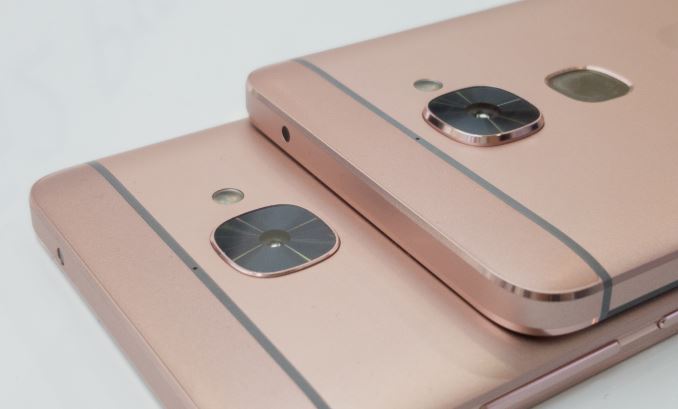
Le 2 (left) vs Le 2 Pro (right)
Below the LeMax 2 are the duo of Le 2 series phone, the Le 2 Pro and the simply named Le 2. Both of these phones share the same basic chassis and screen, incorporating a 1080p LCD in a 5.5” phablet form factor. The design is also the same as the LeMax 2 so except for the smaller camera bump on the basic Le 2 you wouldn't be able to tell the difference between the Le 2 Pro and the LeMax 2. The difference, as you might expect from the name, comes from the feature set and price.
Starting with the Le 2 Pro, this phone is based around MediaTek’s Helio X25 SoC, which offers 3 clusters of ARM Cortex CPUs – 2 A53 quad core clusters at different performance/power levels, and a dual core A72 cluster. The X25 in turn is paired with 4GB of LPDDR3 and 32GB of eMMC 5.1 NAND. Also setting it apart from its more basic counterpart is the rear camera module, which like the LeMax 2 is a 21MP camera utilizing Sony’s IMX230 sensor. However OIS doesn't seem to be available in this somewhat smaller phone.
As for the basic Le 2, this sees LeEco dropping down to the lower performance Helio X20 SoC, which cuts down on both the A72 cluster and GPU clockspeeds. The Le 2 gets a smaller 3GB of LPDDR3 RAM and the same 32GB of eMMC 5.1 NAND, however the camera module is a simpler 16MP camera utilizing a hereto-unknown sensor.
Otherwise both phones share identical specifications as far as all other features are concerned. The Helio SoC offers its own integrated Category 6 LTE modem, and both phones incorporate a 8MP front facing camera. And since both phones share the same chassis, both phones also come equipped with a 3000mAh battery. Finally, for I/O and connectivity both phones share the larger LeMax 2’s configuration: dual-band WiFi + Bluetooth 4.2 for wireless data, and the sole USB Type-C port for data and audio.
The Le 2 will be hitting the market at ¥1099 (~$170), while the more powerful Le 2 Pro adds another ¥400 to the price tag, bringing it to ¥1499 (~$230). Today's launch is a China-only launch, however LeEco is pointing out that in the future we'll be seeing focus on the US as its next target market outside of their established market in China and India with the possible introduction of derivative models with modifications to the specifications such as different SoC choices.


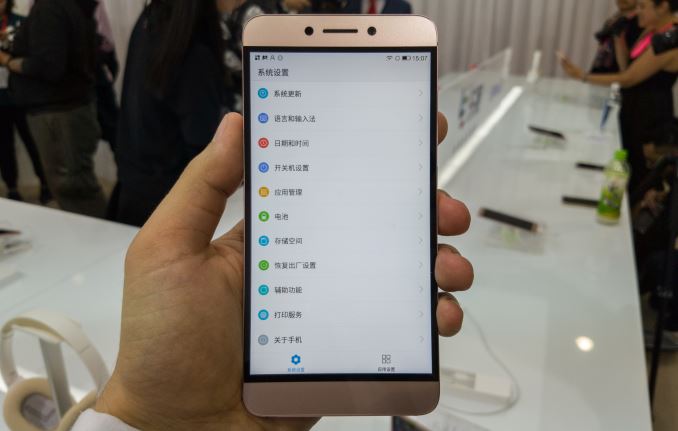

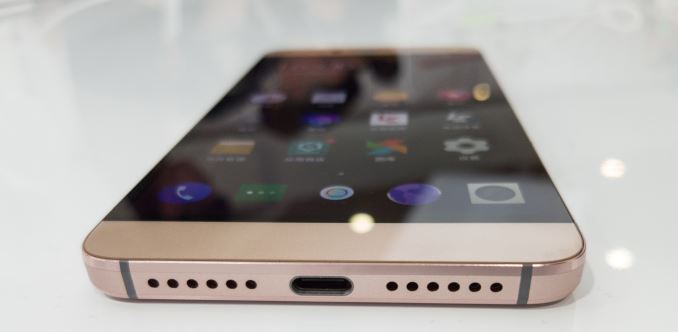
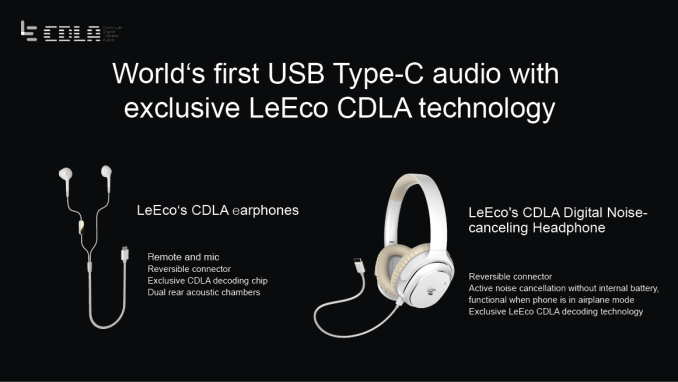
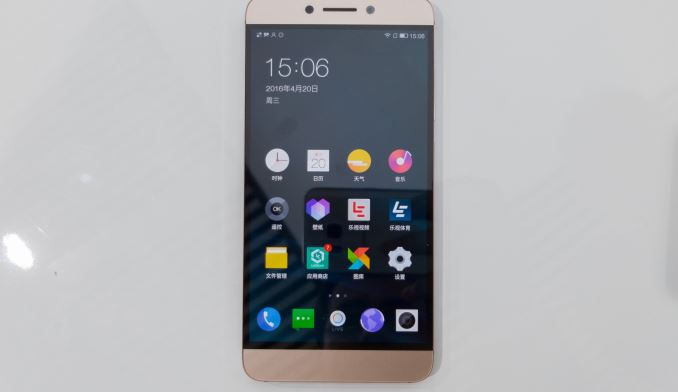
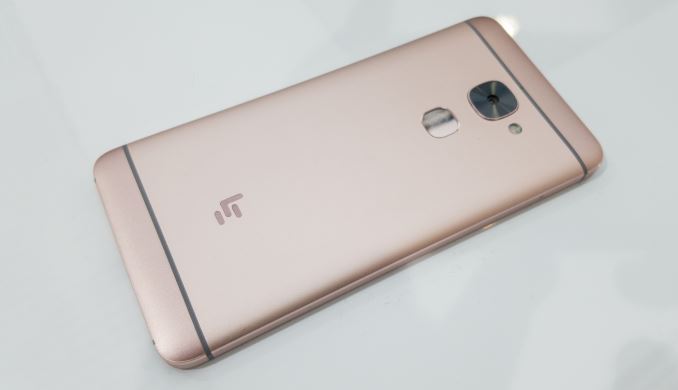














37 Comments
View All Comments
LuxZg - Wednesday, April 20, 2016 - link
+10 for edit button... Just plain annoying, not having a feature that forums, comments and all sorts of in-betweens had for dozen years. Is it that hard?jjj - Wednesday, April 20, 2016 - link
I wasn't saying it is ok to get rid of the audio jack, it's annoying.As for value, they do lead right now, by quite a bit. The Note 3 Pro is much lower value than the Le 2. At 999CNY it has a lesser SoC, 2GB RAM and 16GB NAND but does have a microSD slot and audio jack. The 3GB RAM and 32GB NAND version is 1199CNY and ofc retains the lesser SoC. MIUI is also rather bloated and slow.
Zuk has a launch tomorrow, maybe they do better in the high end but doubt it.
Le Geek - Wednesday, April 20, 2016 - link
Well redmi note 3 does have a massive edge in battery capacity (4000mah vs 3000mah). This I believe should be more noticeable to the user than the extra gig of ram.That being said, you are absolutely correct in saying that MIUI is bloated and slow. Infact, the software is the only reason preventing me from getting one for myself. Probably I'll hold out a bit more and see what the moto g4 has in store.
jjj - Wednesday, April 20, 2016 - link
The battery life will depend on what parts one uses, on software and usage profile not just battery size. The x20 does have a process advantage (and extra small cores that are actually utilized often). We'll see how the screens compare in power and how power consumption is in specific tasks (browsing, gaming, video).Battery life is also a somewhat overblown issue. As long as it lasts for the entire day, it doesn't really matter if it's a little bit more or not. If nothing went wrong with this device, 3000mAh should be ok .
For me, no microSD is a deal breaker and i mind about a bunch of other things (audio jack, black borders) but they do offer great value. They aren't even 1 year old in phones yet , hard to be too harsh with them.
Murloc - Wednesday, April 20, 2016 - link
the point of listening to music on the phone is portability, I don't think that's a common use case. Or at least it never happens to me.You're right about the hassle of having to bring around one more thing.
zanto - Wednesday, April 20, 2016 - link
IR blaster is a must have for me. Until IoT really catches on, being able to control my tv, ac, home theater etc using my phone does add a ton of utility value since my phone is usually just an arm's reach away.RaichuPls - Wednesday, April 20, 2016 - link
Woah LPDDR4-3733? That's twice the speed of the RAM in the S7, which was LPDDR4-1800. I wonder what the impact on GPU performance would be, since they access the same memory. Also surprised LPDDR4 can actually clock that high, given it's supposed to be low voltage and power.menting - Wednesday, April 20, 2016 - link
yes, LPDDR44-3733 is a valid spec and is mass produced already. There's no LPDDR4-1800 on the datasheet anywhere, not even at Samsung's own website..so I'm guessing it's really LPDDR4-3600. http://www.samsung.com/semiconductor/products/dram...RaichuPls - Wednesday, April 20, 2016 - link
Wasn't the LPDDR4 spec for up to LPDDR4-3200? It's such a difference compared to desktop DDR4, unless it's actually quad pumped instead of dual pumped?
nightbringer57 - Wednesday, April 20, 2016 - link
Hmmm...And if I want to listen to music while my phone is charging?